Tags
Aldus Manutius, Basel, Bible, Byzantine, Cambridge, England, English, Erasmus, Froben, German, Greek, John Colet, Latin, Latin Vulgate, Martin Luther, New Testament, Nikolaus Gergel, Roman Catholic Church, Thomas More (1478-1535), University of Utah, Venice, Western European, William Tyndale
NOUUM TESTAMENTUM GRAECE
Argentorati : Apud Vuolfium Cephalaeum, 1524
BS1965 1524
First edition, first printing in octavo of the Erasmus New Testament in Greek. This edition, in its compact format, was much more affordable than Froben’s earlier editions, two facts that arguably gave Erasmus’ translation greater societal impact. The text closely follows the Nikolaus Gergel edition of 1521, the second edition of the Erasmus Greek New Testament.
Desiderius Erasmus (1466-1536) took monastic vows at the age of twenty-five. An independent scholar, he spent time at Cambridge where he befriended John Colet (1467-1519) and Thomas More (1478-1535) during a time of great stress in the English Church. He spent three years in Venice working as an editor in the publishing house of Aldus Manutius (1449-1515). He later worked with printer Johannes Froben (1460-1527) in Basel.
While in England, Erasmus began a systematic examination of available manuscript copies of the New Testament. His resulting Greek New Testament, with Latin in parallel column, was first published by Froben in 1516. The 1516 Greek-Latin New Testament was used as a primary source for Martin Luther’s translation of the New Testament into German (1522), and for William Tyndale’s translation of the New Testament into English (1526).
Although Erasmus was criticized by later scholars for not having used all available manuscript copies of the Greek New Testament and for not using Byzantine copies, his translation is noted as the first Western European attempt to find a truer translation of the New Testament than that of the fourth century Latin Vulgate, the translation used almost exclusively by the Roman Catholic Church. The translation re-introduced the study of Greek biblical manuscripts and other Greek works on the Bible into Western Europe.
Only ten copies of this edition and printing are listed in WorldCat. University of Utah copy has extensive marginalia in multiple contemporary or just post-contemporary hands (possibly four) throughout.

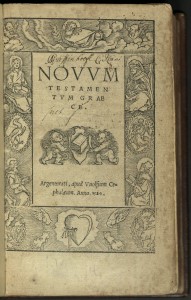
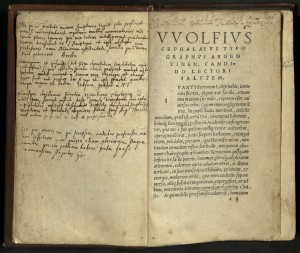
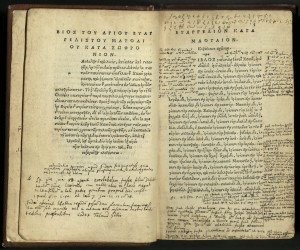
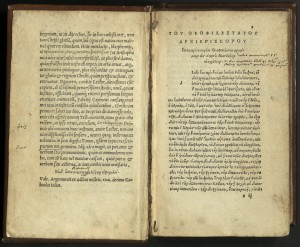
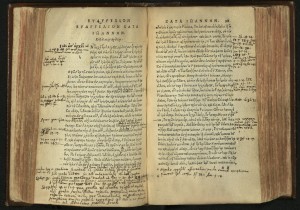
Nice description! Your dissertation here indeed!
It is a wonderful book!